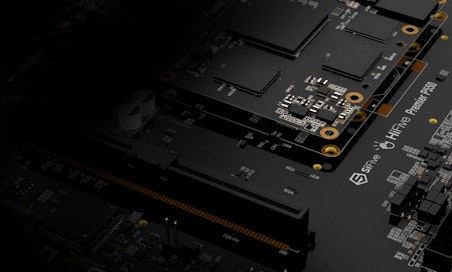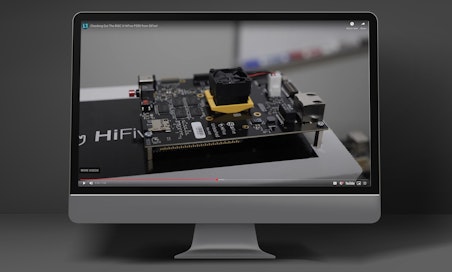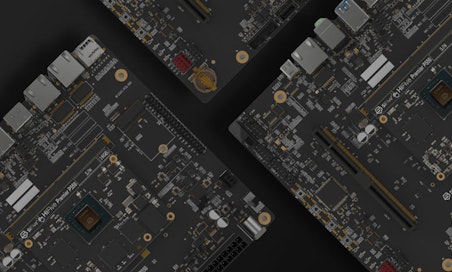SiFive 博客
来自 RISC-V 专家的最新洞察与深度技术解析

RISC-V 基础设施:现在,关键在开发者
 作者:Ian Ferguson,SiFive 商务拓展副总裁
作者:Ian Ferguson,SiFive 商务拓展副总裁
我在 2024 年初加入 SiFive 时,最初的工作重点(此后有扩大)是研究如何推动 SiFive 的 RISC-V 技术在面向数据中心的 system-on-chip 组件中可以被更广泛采用。引入新技术并取代长期占据主导地位的既有厂商,这并非几个季度就能完成的任务,这类计划往往需要多年才能真正落地。我深有体会:早在 2008 年初,我和几位同事(我们在公司内部被称为“特立独行者”,但我们更喜欢“有远见者”这个称呼)共同发起推动 Arm 进入服务器市场的计划。
加入 SiFive 后,我很快意识到,我们的 CPU roadmap 在单线程性能方面终将赶上现有供应商的产品。但要真正向更广泛的客户群开放这个市场,而不仅仅是一两个早期创新者,还需解决另外三个方面的问题。
在这篇文章中,我将先探讨第一个方面:如何赋能软件开发者社区。至于另外两个方面,我暂时先保留起来,在我后续的文章中会再讨论它们。
三个数字
90
4
12,800
这些数字代表什么?目前,预测显示 NVIDIA 占有 90% 的基于 GPU 的神经网络训练市场。他们拥有超过 4 百万名的开发者。而在 Linux 内核中,每天平均有 12,800 行代码被新增、修改或删除。
有人说“硬件再次变得酷炫”,但归根结底,若缺乏强大的软件支持,企业要采用新硬件技术的成本和难度仍然过高。
今年 5 月,Red Hat 宣布发布 Red Hat Enterprise Linux (RHEL) 开发者版本,用于 SiFive 最新的 RISC-V 开发板 HiFive Premier P550。此外,他们还向 CentOS 社区开放了 RISC-V 源代码。
7 月,NVIDIA 宣布正在将 CUDA 移植到 RISC-V,并以 HiFive Premier P550 作为起点。尽管他们尚未公布代码可用的时间表,但该消息已在媒体、客户以及竞争对手之间引发广泛关注。
我只能分享目前已公开的信息。Joe Byrne 的一篇精彩分析則提供了有用的背景信息。正如 Joe 写道:
“NVIDIA 正将 RISC-V 与 Arm 和 x86 一起作为受支持的架构——这意味着,一旦代码可用,企业将能够选择 RISC-V CPU 与 NVIDIA GPGPU 结合使用。
RISC-V International 也刚发布一篇 blog,內容基于他们与 NVIDIA 的 Frans Sijstermans 的对话,分享这则在 RISC-V 中国峰会上公布的重要消息。
来自 Red Hat 和 NVIDIA 的共同主题
我认为 Red Hat 与 NVIDIA 的公告有三个共通点:
面向未来: 两家公司都在为 RISC-V 服务器硬件广泛部署的未来做准备。他们希望能提前做好准备。
首选平台: 两家公司都以 HiFive Premier P550 开展初步工作。这归功于 HiFive Premier P550 相较于其他 RISC-V 开发板更高的性能、稳定性,以及 SiFive 工程团队在上游开源代码方面的出色工作,此外还有硬件本身的性能和扩展能力。这种强大的芯片功能使许多开发人员能够以全新方式 “亲身体验” RISC-V。
RVA23 里程碑: RVA23 配置文件的正式通过产生了极大的推动作用。大型生态系统参与者希望将目标锁定在由多个供应商支持、且具备一致处理器架构的平台上。而软件可依赖的通用指令集是实现这一目标的关键。
同时,也必须认可 Canonical 在 RISC-V 生态中的开创性贡献,他们让 Ubuntu 成为 RISC-V 的一等公民。
这些行业巨头的共同投入,加上众多参与 RISE 项目的公司支持,都在推动一个现实:客户将能够从三种处理器架构中自由选择。系统构建商、软件开发者和组件供应商面临的障碍几乎每天都在被逐步消除。
RISC-V 的独特在于它的开放性。供应商可以针对狭窄且高度专业化的垂直市场开发芯片。NVIDIA 显然看到了将 CUDA 扩展到全新应用领域的机会——这对于其他商业化、为广泛通用市场而设计的指令集架构(ISA)是很难实现的。CUDA 的强大功能与 RISC-V 的无限未来相结合确实令人兴奋。
SiFive 最近刚庆祝成立十周年,我们将继续突破 RISC-V 的极限。一如既往,我们想听到您的想法、您的创新以及您正面临的挑战。
今年 10 月,SiFive 也将参与在圣克拉拉举办的 RISC-V 峰会,期待许多精彩的演说与讨论。让我们利用这个活动来扩大对话,并进一步加速 RISC-V 发展。
最后,能否证明 NVIDIA 的选择是正确的,就取决于整个 RISC-V 社区了。











